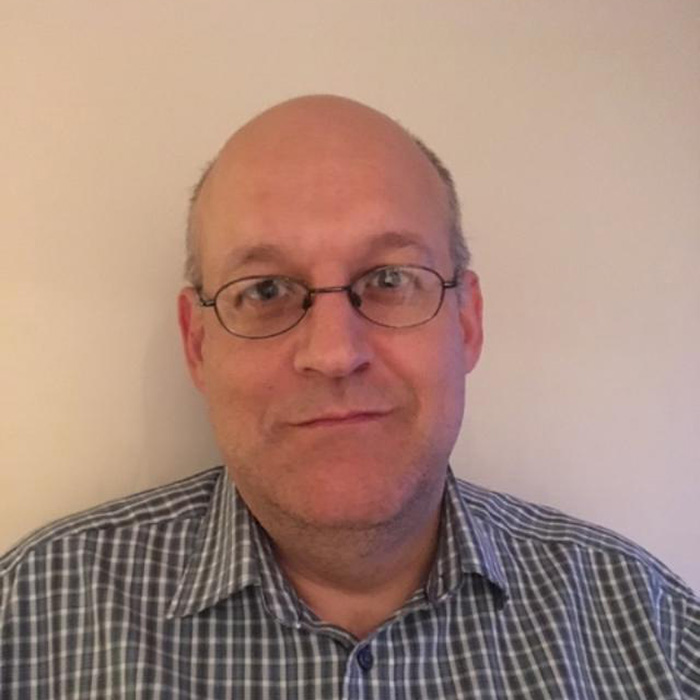Mark Griffith captured this collage of nine images at five-minute intervals from Swindon in the UK. Mark used an Imaging Source DMK41 mono CCD, a Lunt 35mm h-alpha telescope and a Sky-Watcher NEQ6 Pro mount. Credit: M Griffith
March 2015 brought forth not just a partial solar eclipse, but an even more surprising occurrence: an eclipse of any kind being visible from the UK, with reasonably good weather to match (at least over south Wales anyway).
During that Friday morning I managed to assemble several like-minded people in the car park of a Cardiff supermarket (having acquired that supermarket’s permission of course), with the intention of involving members of the public in the celestial spectacle that lay ahead.
I recall counting down the minutes to the event with precision, as the Moon caressed its way between Earth and the Sun, slowly casting an ever-growing shadow on parts of our planet’s surface.
Because the alignment between the three bodies - the Sun, the Moon and Earth - isn’t a perfect line, there can a difference as to how much shadow is cast.
A partial eclipse occurs when the lunar penumbra, the lighter of the Moon’s shadow, is cast upon Earth.
A total eclipse occurs when the Moon completely blocks out the Sun’s disc, casting a more focused and darker shadow known as the umbra.
As far as the UK was concerned on that March day, the further north you were the better, with parts of Scotland experiencing up to 98% coverage of the Sun, with the far south of England experiencing about 85%.
Across Cardiff it was 90%, and with the clouds remaining nicely broken, expectation was high.
Using a projection screen fitted at the observing end of a telescope to cast an image onto, plus a pinhole camera, the scene was set.
As the hours passed, a number of passers-by did show an interest.
Amongst the gathering were two workmen who happened to have a welder’s mask in their van.
With great excitement, it became apparent that with the welder’s mask, a lot more people could now look at the partial eclipse, as the mask made for a perfect piece of viewing equipment.
One of the workmen stopped a young man on his way into the supermarket, enquiring if he would like a look at the eclipse through the mask.
The young fellow replied: “Oh yeah, the eclipse of the Sun. I thought that was tonight!”
With muted laughter as to whether or not he was serious (which he was), he too held the mask skyward.
During the midway point of the eclipse, there was a noticeable reduction in light; perhaps not as much as one would have anticipated for 90%, but still a distinctly eerie half-light, bringing a chill to the morning.
It was akin to the chill I experienced during the 1999 solar eclipse, when I recall watching a shadow travelling up the Welsh valleys as the eclipse neared its midway point.
However, this time around only a small minority of people seemed aware of any change or even what was taking place above them, as sadly the partial eclipse was going mostly unnoticed.
One aspect that was quite striking during the gathering was the use of mobile telephone cameras to take images.
In some way, looking back it feels like I was in the midst of a revolution in astronomy, as all of a sudden people began pointing their smartphones skyward, rather than the now cumbersome-looking old stage hands of Messrs Telescope and Binoculars.
Not to be outdone, I too turned my phone skywards and whilst the Royal Observatory in Greenwich can rest easy, I was fairly impressed with the photograph.
Also, if there is a way to make astronomy more accessible to the public, then I’m all for it, and with modern mobile phone technology there seemingly lies one such perfect gateway.
As the eclipse passed and the gathering disbanded, thoughts turned to future eclipses, with a repeat of March 2015 not scheduled until 12 August 12 2026.
